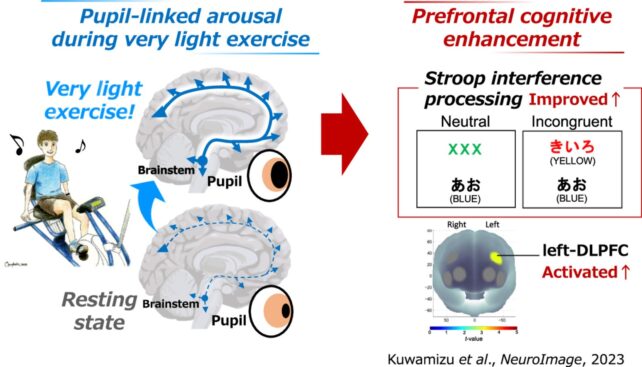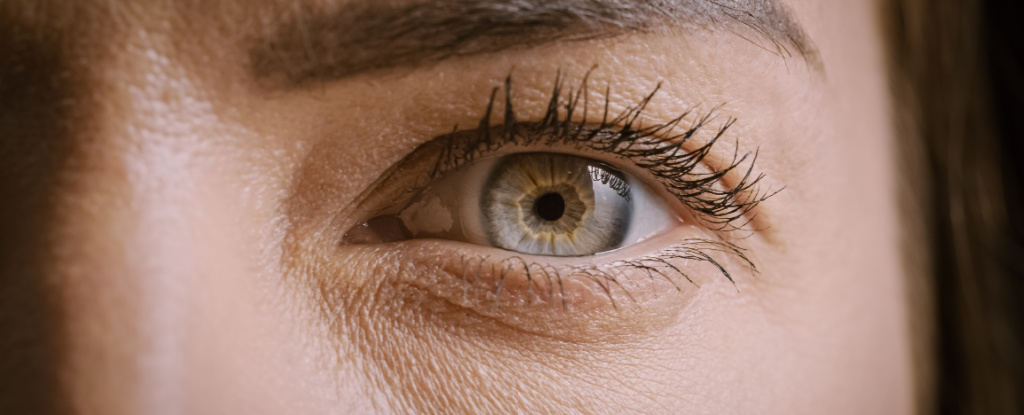Products You May Like
The way your pupils react to light exercise could reveal whether you’re getting one of the key benefits of movement – the cognitive boost linked to improved mood and enhanced executive function.
Researchers in Japan monitored pupil size in 24 participants during 10 minutes of light exercise and then used neuroimaging to see how participants’ brains responded to a cognitive task.
It was only a small trial, but the results showed that the more people’s pupils dilated during light exercise – in other words, the bigger they got – the better the cognitive boost they received.
“This finding supports our hypothesis that the pupil-linked mechanisms … are a potential mechanism by which very light exercise enhances prefrontal cortex activation and executive function,” the team of neuroscientists and exercise scientists from the University of Tsukuba explained in their paper, published in August 2023.
While it sounds like a weird link, it’s now well established that exercise, even low-intensity exercise such as yoga and walking, can boost our mood and help us focus better to complete a task – benefits that involve the brain’s prefrontal cortex.
But the exact neural activity that leads to this executive function boost from exercise is still poorly understood.
One way to get an insight into what’s going on inside our brain is through the eyes; previous research has shown that our pupils can reflect deeper neural activity.
To investigate further, the researchers recruited healthy young adults and asked half of them to participate in 10 minutes of very light exercise, and the other half to serve as a control group and simply rest on the exercise machine.
Before, during, and after the workout period, participants had their pupil size non-invasively monitored, and they were also asked about their mood.

Both groups took an executive function test before and after the workout. This was called the Stroop color task and it asked whether a word (red or green, for example) matched the color it was displayed in.
While this test was carried out, the team studied participants’ prefrontal brain activity using functional near-infrared spectroscopy.
The results showed that the light exercise made participants perform better on the cognitive task than the control group, and this was correlated with increased activity in the left dorsolateral prefrontal cortex of the brain, a region associated with executive function.
Interestingly, they also showed that the pupils of the exercise group dilated as they worked out, while the pupils of those in the control group didn’t change size.
And the more a participant’s pupils dilated during the workout, the better the boost in cognitive function when they performed the test at the end.
“These results strongly suggest that the enhancement of prefrontal executive function resulting from very light exercise can be attributed to pupil-linked neural activity,” a press release explained.
“Looking ahead, pupil diameter holds promising potential as a novel biomarker that can be used to predict the effects of exercise on the brain.”
This is the first study to suggest that the part of the central nervous system that underlies pupil dilation is linked to the cognitive boost that comes from exercise.
Of course, it’s just a small, preliminary study. The researchers explained that the results are limited by only looking at healthy young adults and an imbalanced group of men and women.
Follow-up studies are required to make sure this effect is real. And then we can start to tease out what it means, and how we can benefit from it.
But it’s a fascinating new insight into the link between our brains and our eyes – as well as the way exercise can alter our brain function.
The research has been published in NeuroImage.
A version of this article was first published in August 2023.
